Are you struggling to understand when to use your telephoto lens? Do you wonder when a telephoto lens might be useful?
You’ve come to the right place.
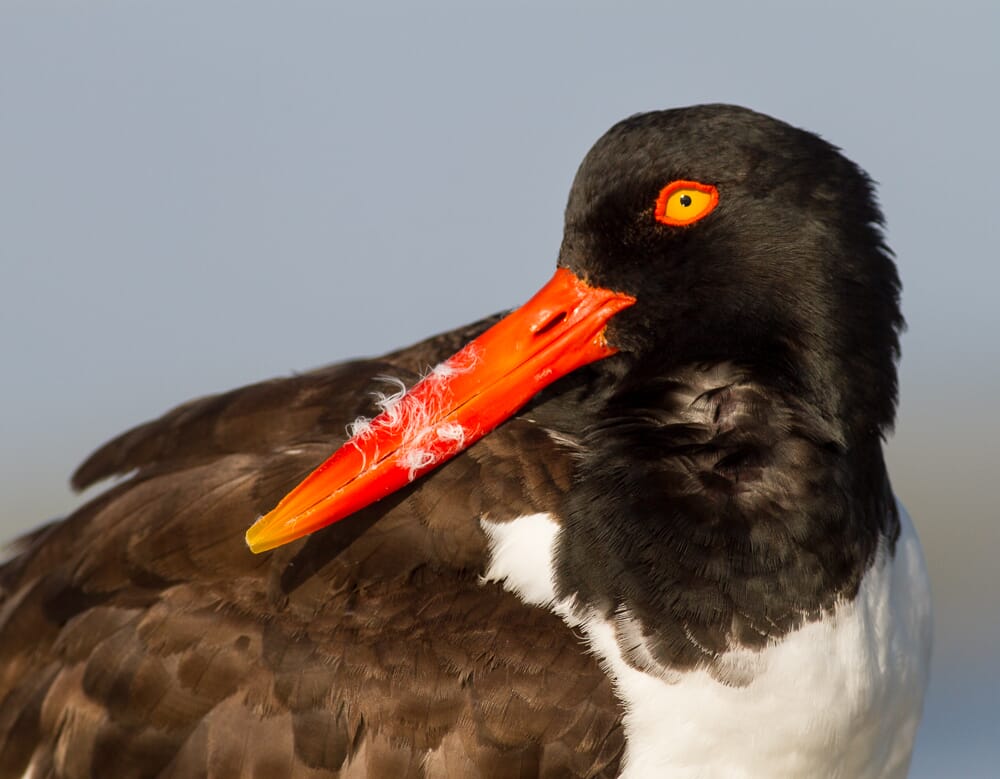
Because in this article, I’m going to tell you everything you need to know about telephoto lenses. I’ll start by explaining the definition of a telephoto lens–and then I’ll go on to show you what, exactly, a telephoto lens can do.
You’ll leave as an expert on telephoto lenses, and how you can use them to capture amazing photos.
Let’s dive right in.
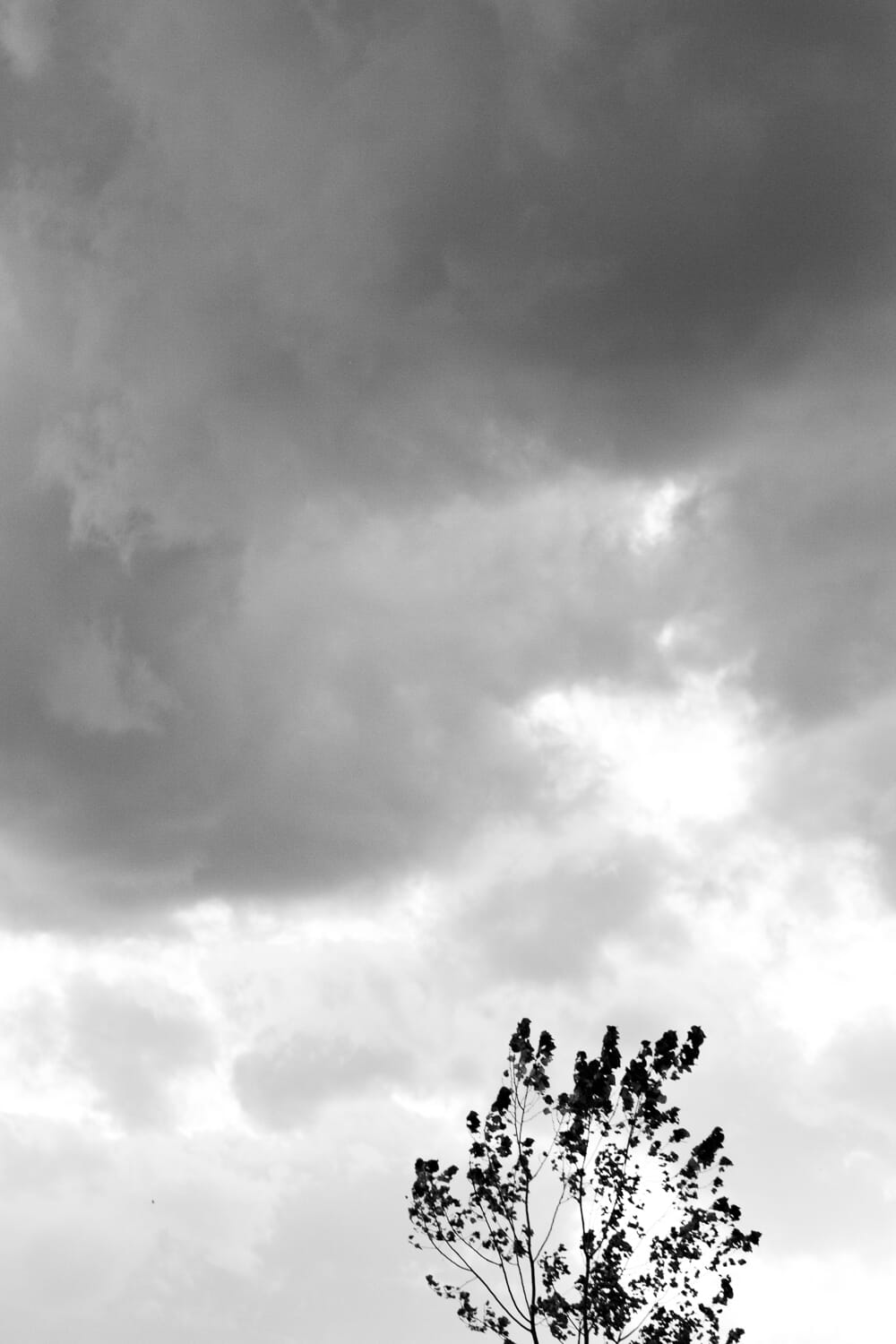
When you buy through links on our site, we may earn a commission at no cost to you. We evaluate products independently. Commissions do not affect our evaluations.
What is a Telephoto Lens?
First things first:
What actually counts as a telephoto lens?
Technically speaking, a telephoto lens has a focal length of over 50mm–that is, over the standard perspective offered by human eyes. So a telephoto lens always makes objects appear at least slightly closer than they really are; in other words, it magnifies them.
But while a lens anywhere from 51mm to 800mm could technically be considered “telephoto,” lenses in the 50mm to 100mm range are rarely referred to this way. Instead, the 50-100mm focal length range is considered “standard,” while the “telephoto” label is applied to lenses from 100mm to 600mm and beyond.
So a 70-200mm lens would be considered “telephoto” (in fact, it’s one of the most popular telephoto focal lengths out there). And a 100-400mm lens would be considered “telephoto” as well, though once you get up to 300mm or so lenses are often referred to as “super telephotos,” because they magnify the subject far more than their mere telephoto counterparts.
Bottom line:
Telephoto lenses magnify the subject, because they’re long.
But when is it useful to magnify your subject? And what types of photographers carry around telephoto lenses in their camera bags?
That’s what I’ll talk about in the next few sections:
Use a Telephoto Lens to Get Close to a Distant Subject
This is the main reason to include a telephoto lens in your gear bag:
Because it lets you get close to distant subjects.
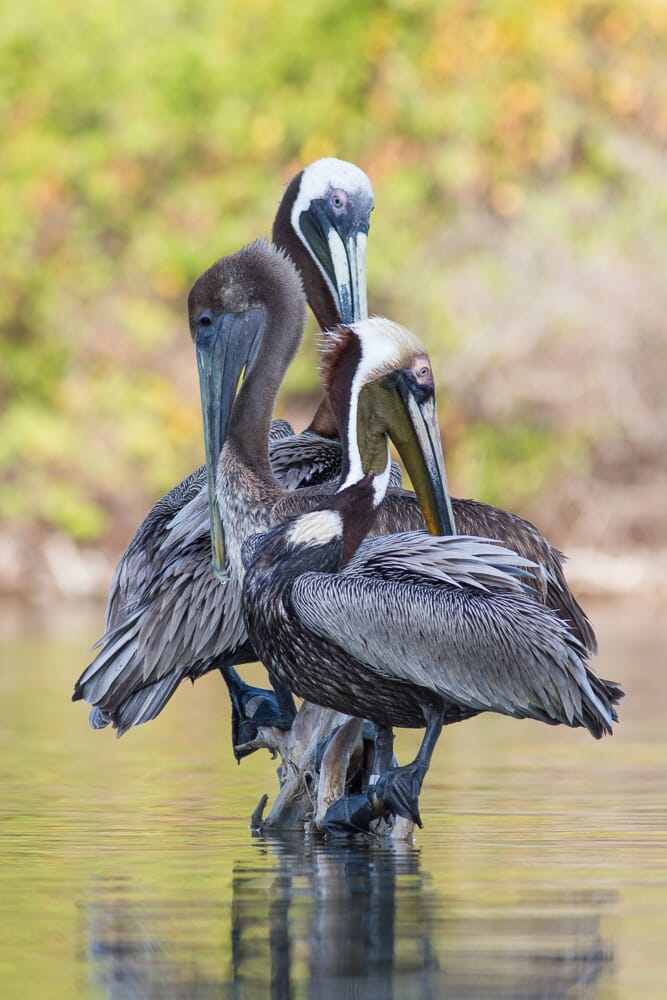
Wildlife photographers, for instance, want to capture close-up images of tiny birds, mammals, reptiles, and amphibians.
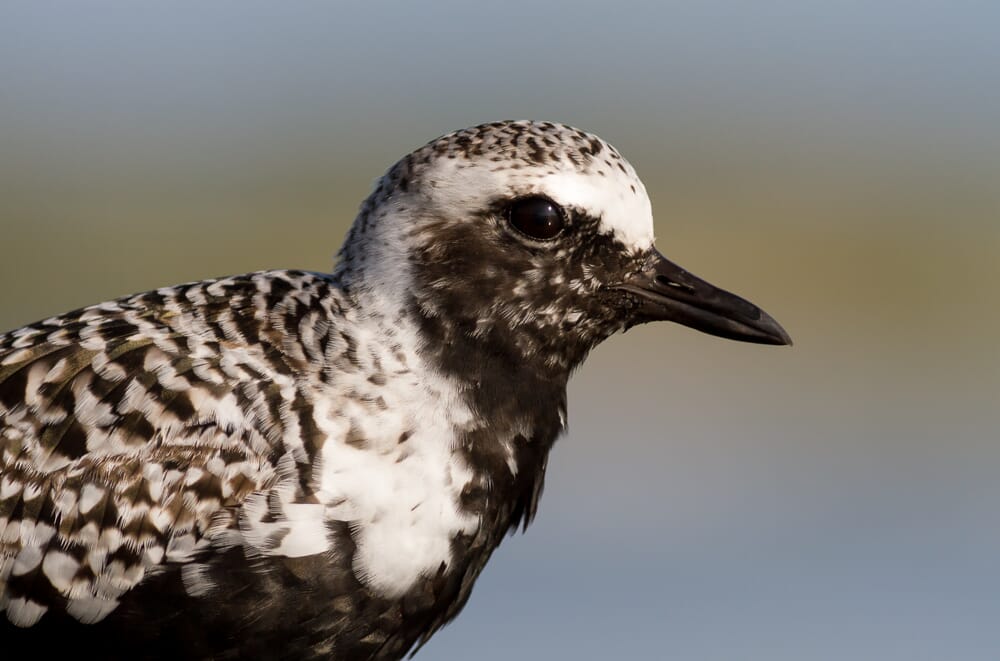
But they can’t do this with a standard lens, because wildlife is far too skittish for such an approach.
Which is why they turn to telephoto lenses. With a 50mm lens, a hummingbird will show up as a tiny dot in the frame.
But with a 400mm lens…
…well, things will start to become a lot more interesting.
This image, of a tiny Semipalmated Sandpiper, was taken with a telephoto lens:
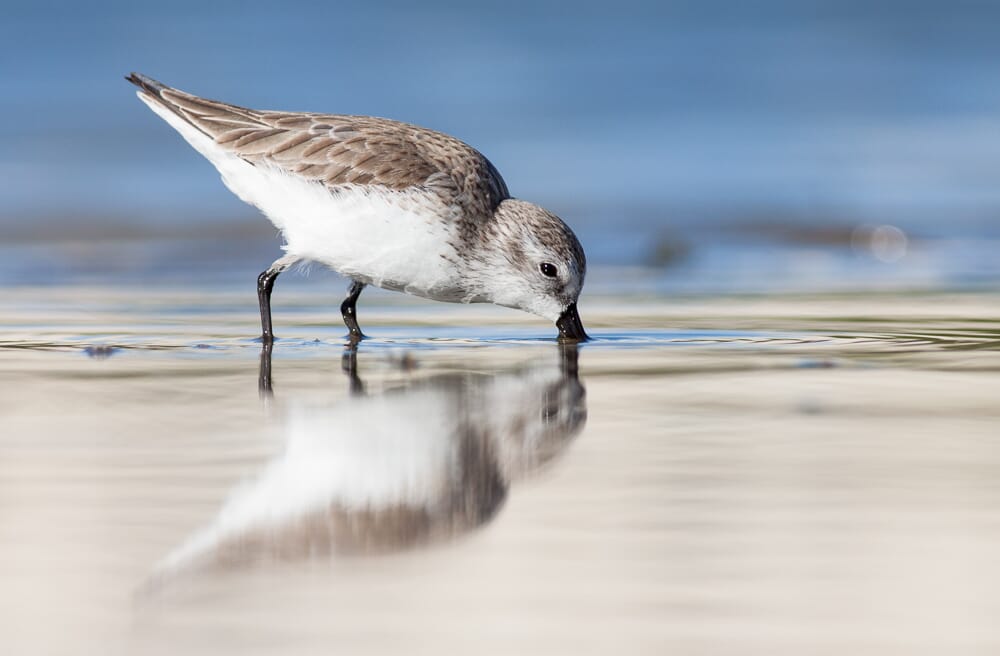
Note that telephoto lenses aren’t only used by wildlife photographers. Anyone who photographs distant subjects needs a telephoto lens–including wedding photographers, so they can capture intimate photos of things far across the room, and sports photographers, who aren’t generally allowed to walk onto the field and must capture close-ups from the sidelines.
You can even use a telephoto lens for more creative purposes, such as street photography (though you have to be careful not to seem too creepy!).

And landscape photographers like telephoto lenses, as well, as I’ll discuss later on in this article.
In other words, telephoto lenses are dead useful. So if you frequently find yourself unable to capture the shots you want because your subject is just too far away, it might be time to grab a nice telephoto option!
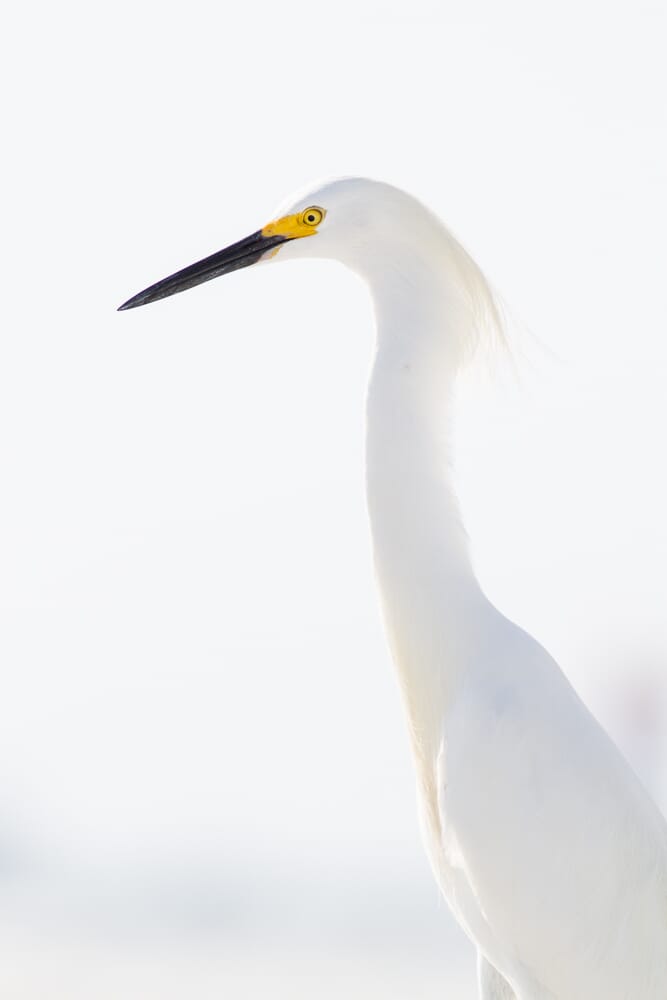
Use a Telephoto Lens for Stunning Detail Photos
I’ve already talked about how telephoto lenses allow you to get close to your subject.
But while telephoto lenses will allow you to get close to wildlife, sports players, and more, they’ll also allow you to magnify details–so you can capture a beautiful, subtle image. Maybe even one that feels wonderfully abstract.
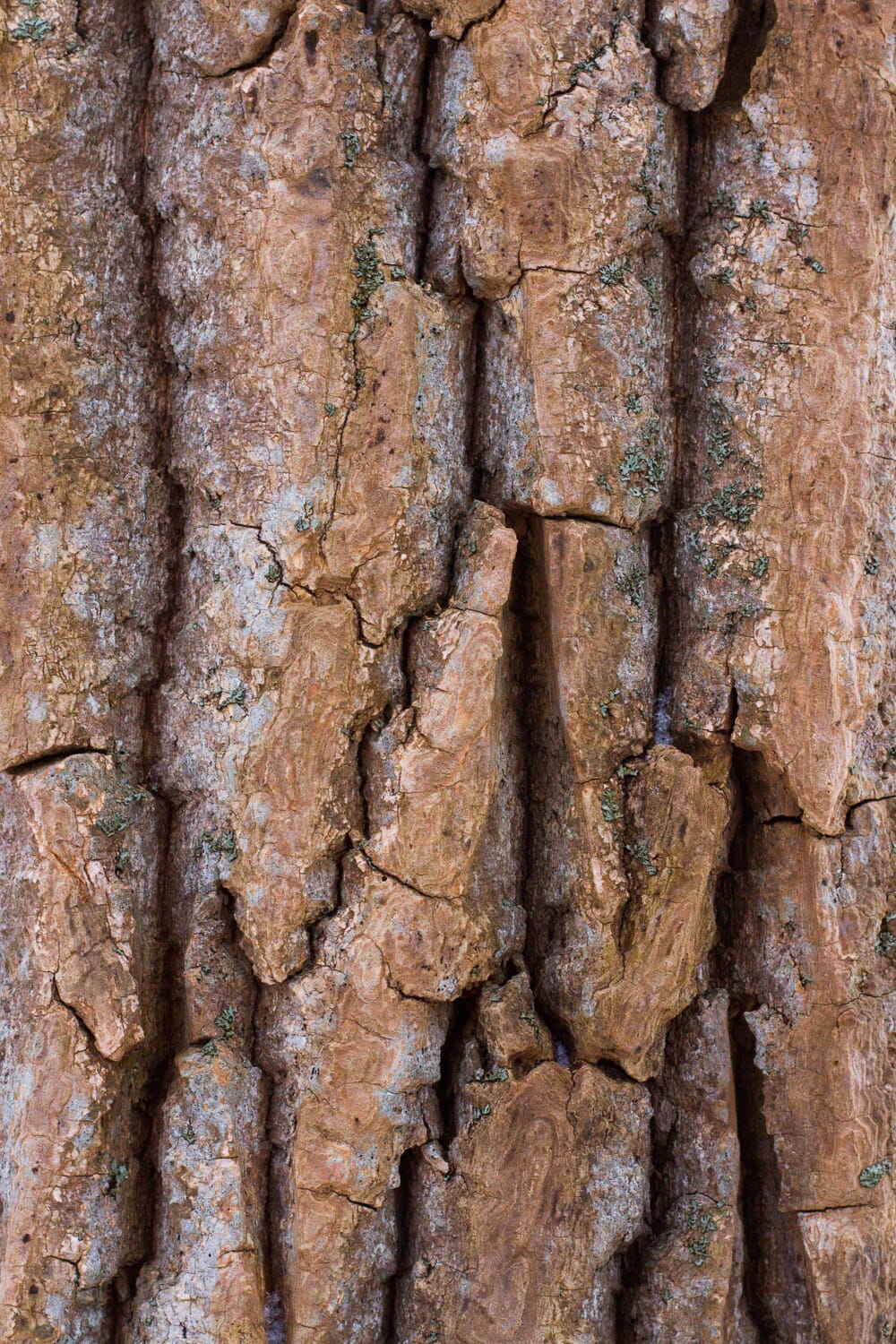
For instance, with a long telephoto lens, you can often magnify a bird’s eyes or a tree’s leaves or even an eagle’s feathers.
Or even part of an urban landscape:

Instead of capturing basic telephoto images, which are very in-your-face but might not be particularly unique, you can capture images like this:
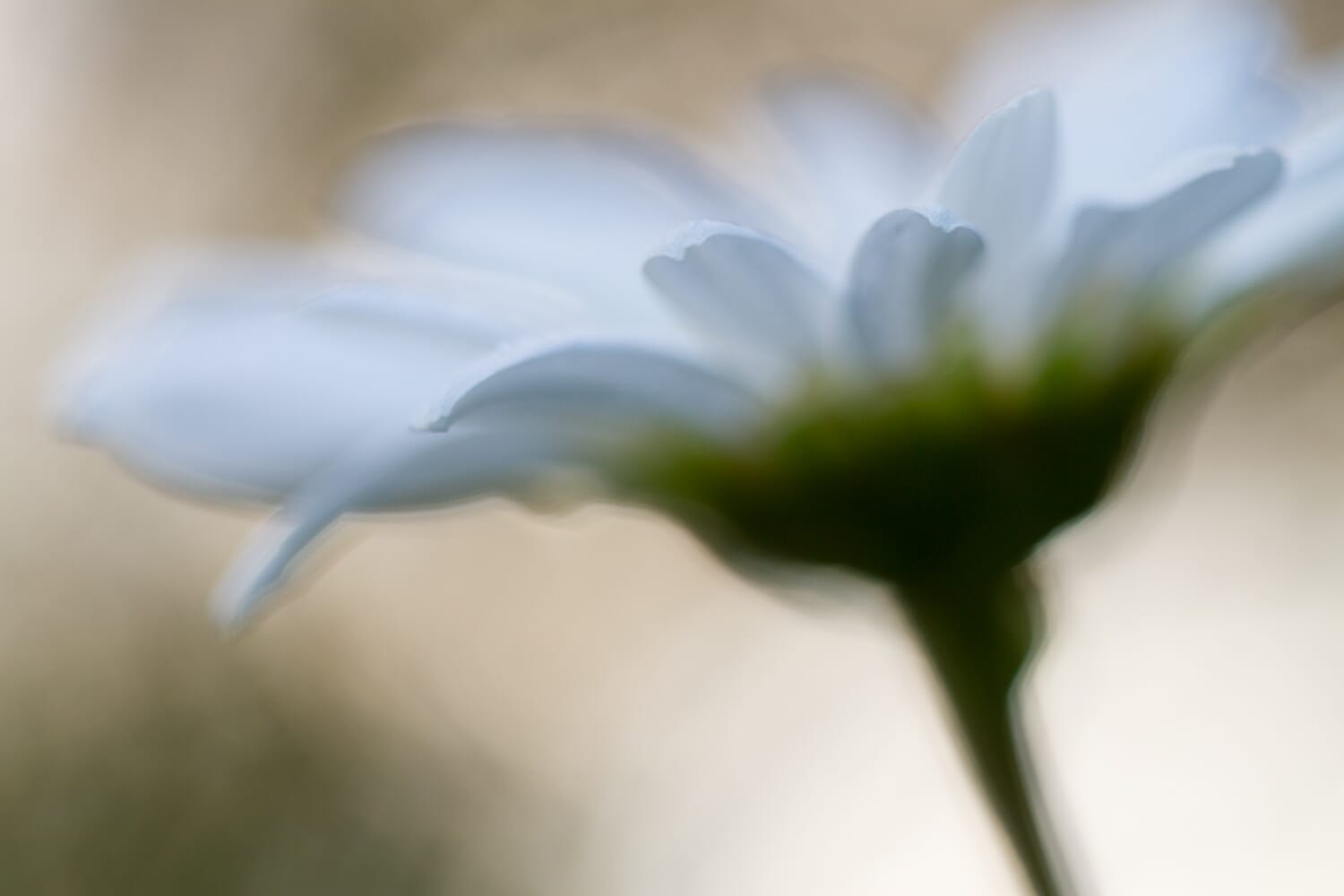
Images that really emphasize the detail on your subject.
I love images like these because they involve out-of-the-box thinking. Instead of using your telephoto lens to repeatedly get close, you use it to get close–and then to find details, which you can turn into a beautiful image.
Make sense?
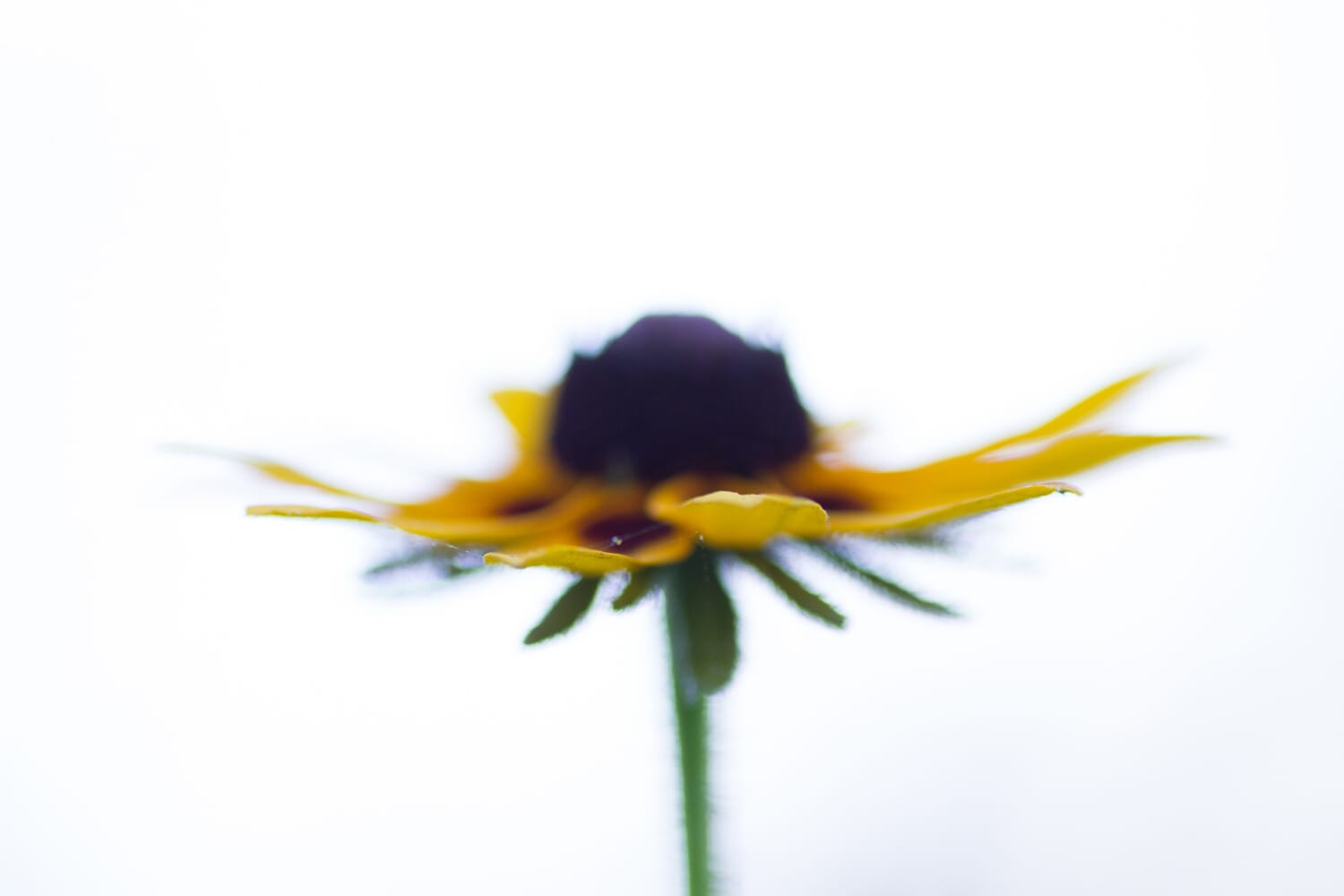
Now let’s look at the next reason for using a telephoto lens:
Use a Telephoto Lens for Beautiful Backgrounds
Here’s a really cool thing about telephoto lenses:
They compress the background.
So when you take a photo of a bird with a telephoto lens, you see a lot less of the background–compared to a photo of the bird taken with a wide-angle lens, even if the bird is the same size in each image.
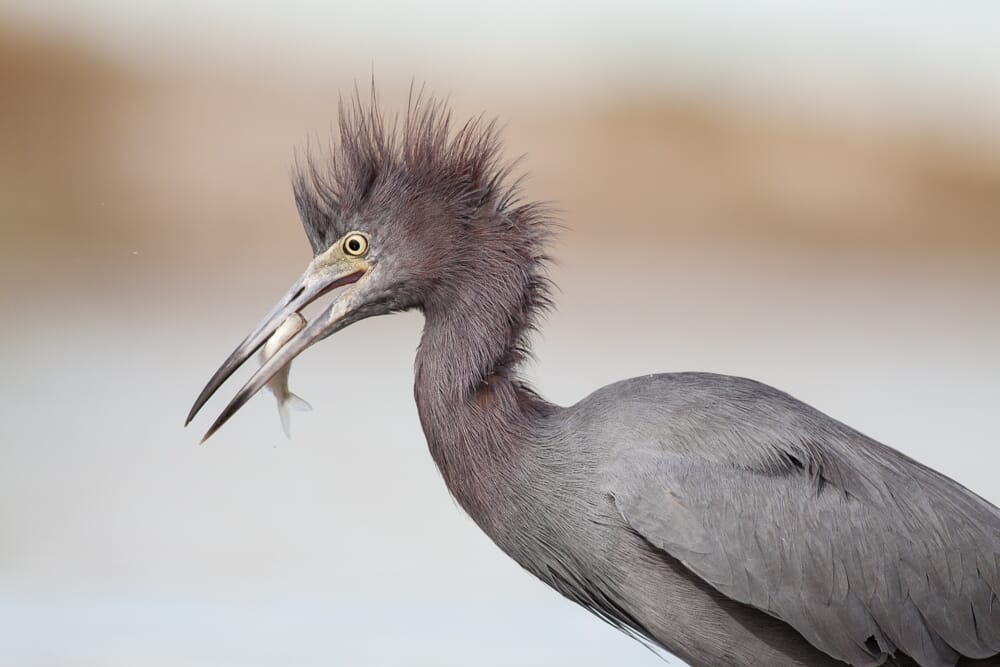
What this means, in practice, is that a smaller portion of real-life background takes up the background of the scene.
So if you had a yardstick behind your subject, you’d only be able to see, say, 12 inches of it–whereas with a wide-angle lens, you’d be able to see the full three feet.
It’s weird, I know. But it’s also something you can use.
Because the more compressed the background, the more the background is stretched to take up the entire frame.
And the more the background is stretched, the better the bokeh effect.
You see, if you’re looking for gorgeous, creamy bokeh, like this:
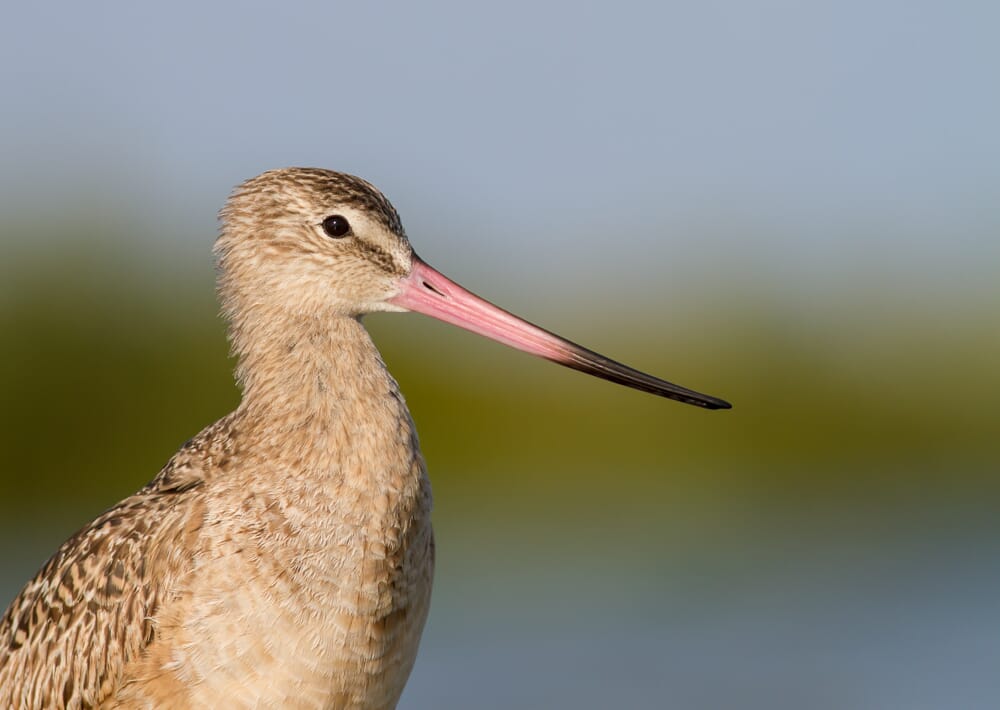
Then a telephoto lens is a great way to achieve it.
The compression that the lens produces will instantly enhance any bokeh already present in the background.
Related Posts
And it’ll result in a blurred background that really makes your main subject pop off the screen.
I love creating strongly-blurred backgrounds, but it’s often frustrating to try to pull this off with a wide-angle lens. While you can achieve a similar effect, it doesn’t have the same power as a telephoto-produced background blur.
Note that you’ll still need to use a wide aperture to achieve beautiful background bokeh. But a wide aperture, combined with a telephoto focal length, is a recipe for amazing backgrounds!
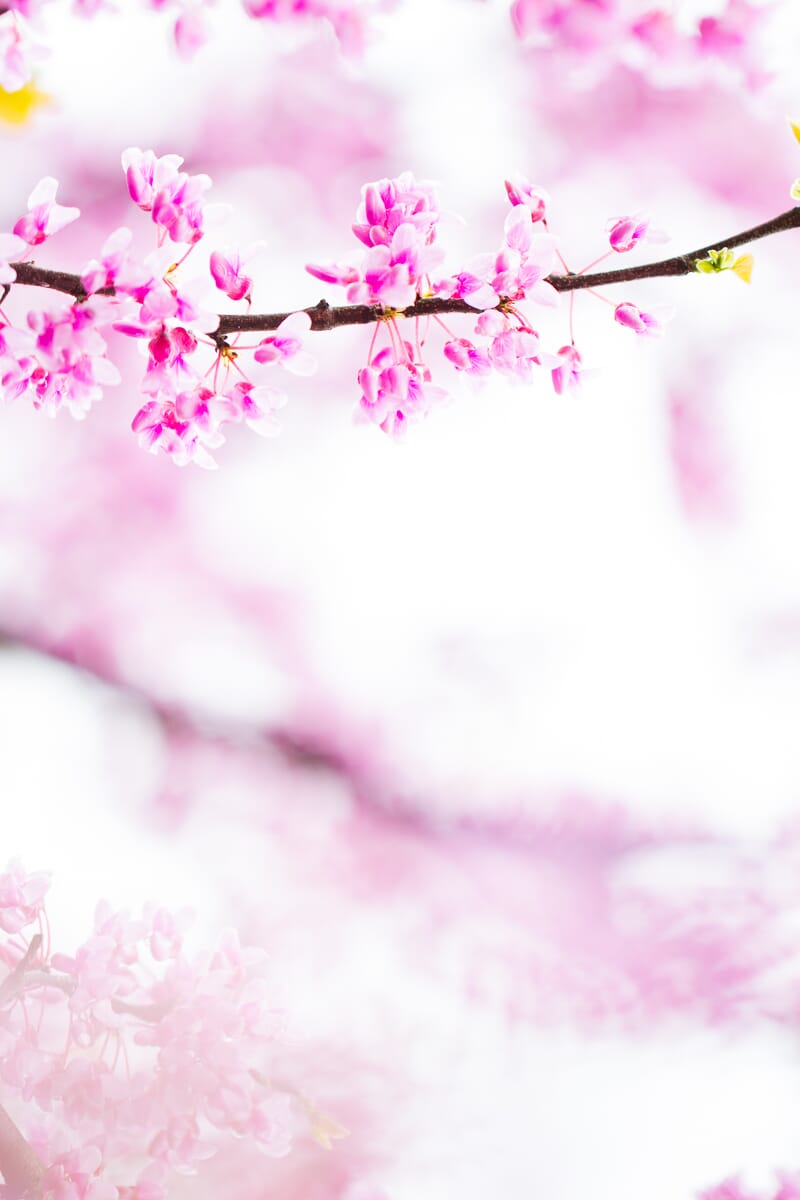
Use a Telephoto Lens for a Compressed Perspective
In the previous section, I explained how a telephoto lens compresses the field of view, resulting in beautiful blurry backgrounds.
But the effect doesn’t stop there.
Because when a telephoto lens compresses the field of view, it compresses the relations of objects to one another–resulting in a very interesting effect.

For instance, if you use a telephoto lens and you get down low, the foreground will be compressed for a very cool wash of color. Like this:
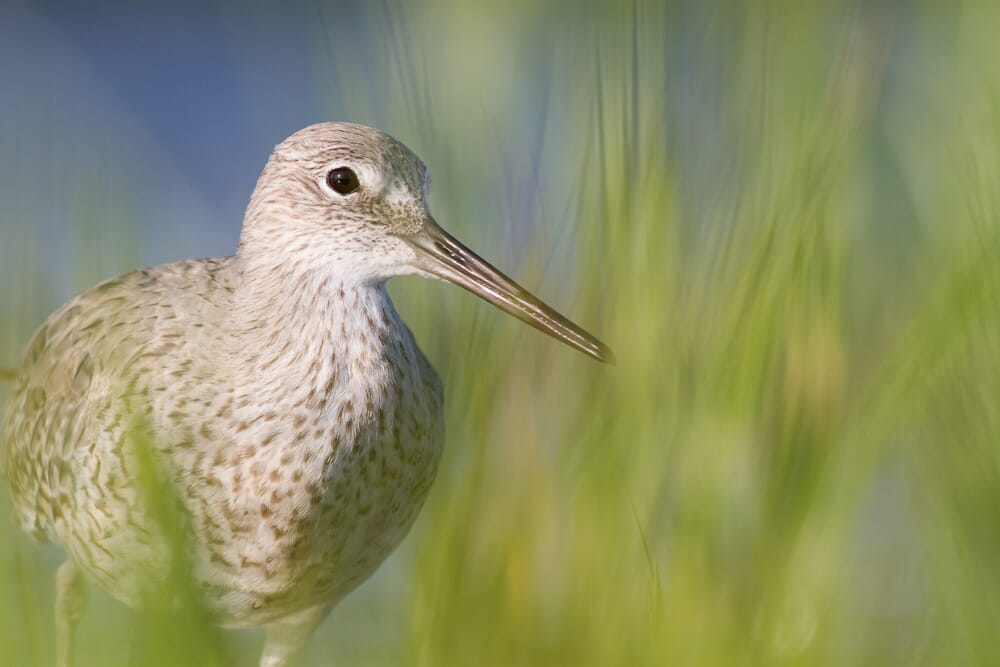
And if you use a telephoto lens when photographing two subjects in the distance, they’ll appear in close proximity to one another. Even if, when using a wide-angle lens, they’d appear far apart.
You can use this. You can take your telephoto lens and create very interesting compression effects. You can get down low for all of your wildlife shots, in order to create an interesting foreground effect:
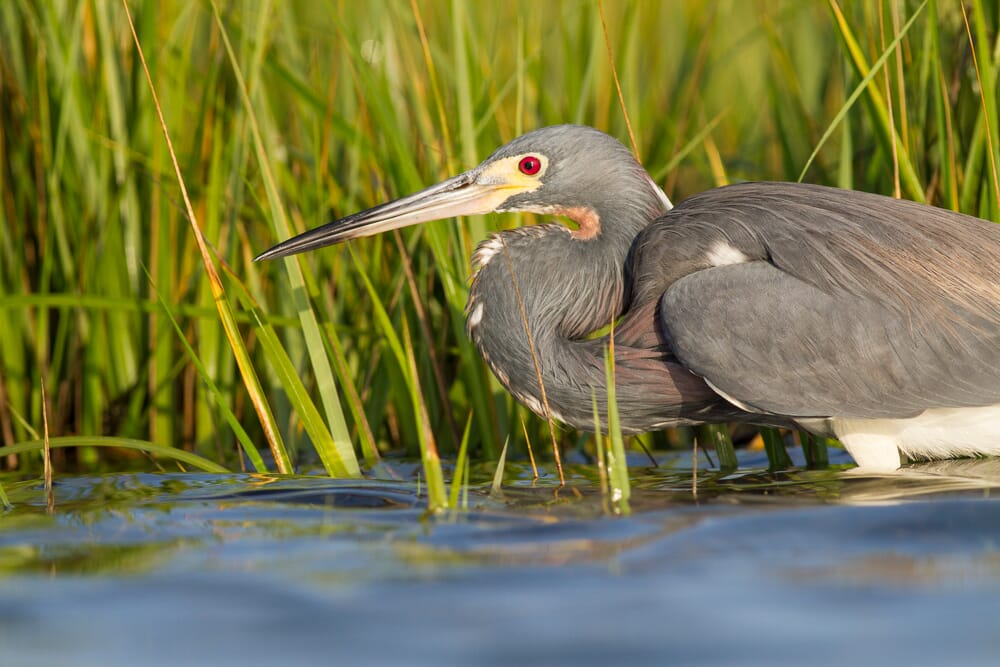
And you can use a telephoto lens in your landscape photography, in order to make all of your compositional elements more related.
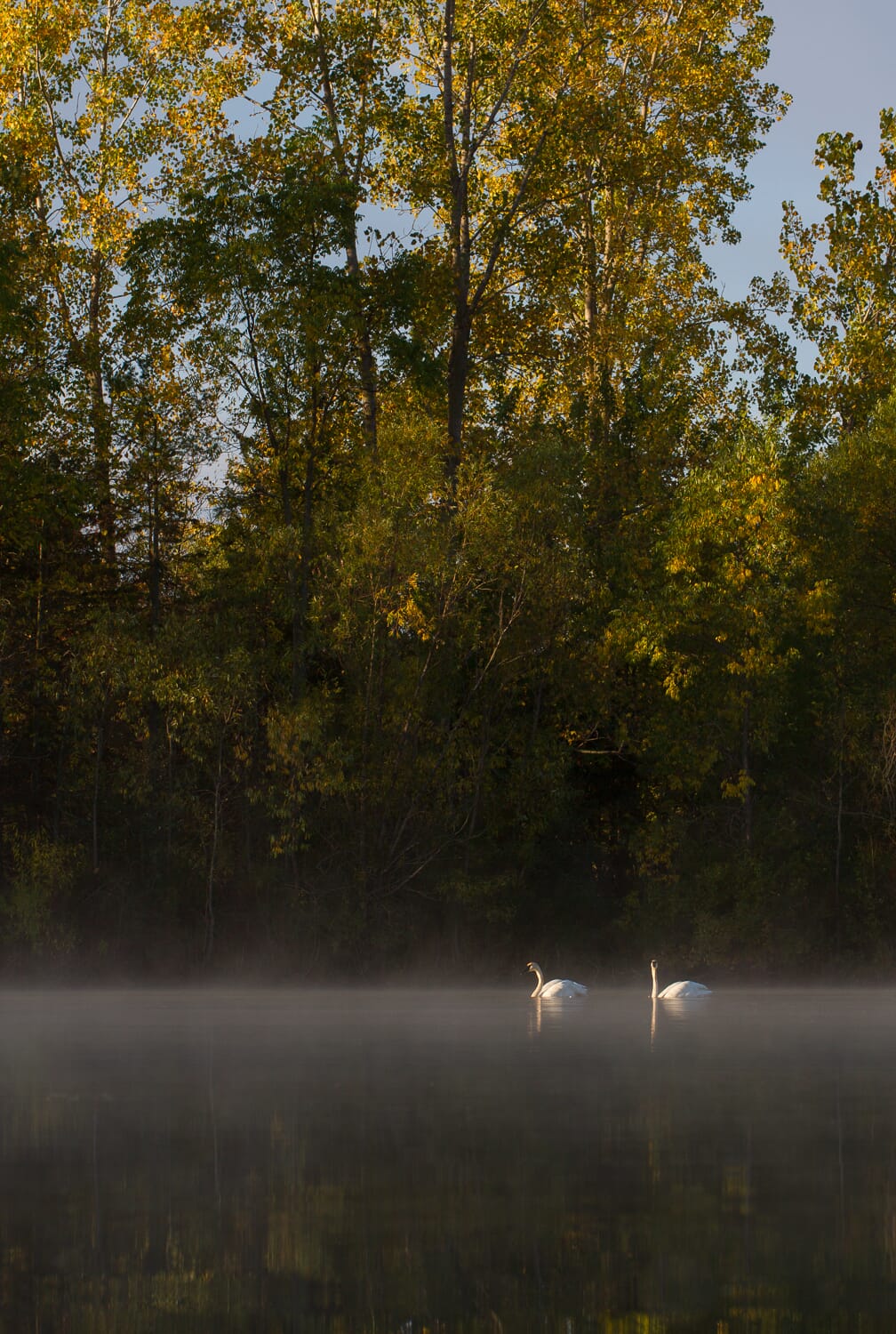
Speaking of landscapes:
Use a Telephoto Lens to Capture Gorgeous Tight Landscapes
My final tip for using telephoto lenses is a more practical one–because I’ve found it to be invaluable in my own photography (and I’m sure plenty of other photographers feel the same).
You see, while landscape photographers tend to confine themselves to wide-angle lenses (in the 10mm to 40mm range)…
…you can also capture amazing landscapes using a telephoto lens.
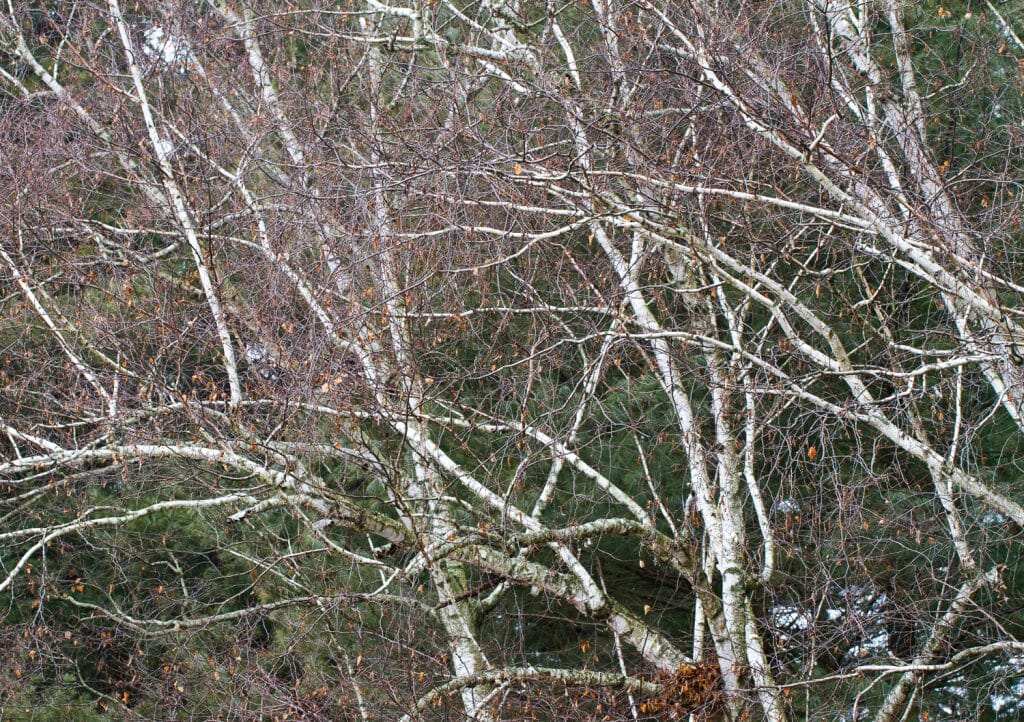
As I discussed above, telephoto lenses compress the scene. This means that if you come upon a beautiful landscape in the distance, you can use a telephoto lens to turn it into something more coherent (and often more abstract).
No, you won’t end up with a conventional, in-your-face style landscape that’s so popular these days.
But you might end up with something even better:
A landscape that nobody has taken before. A landscape that feels intimate, even otherworldly.
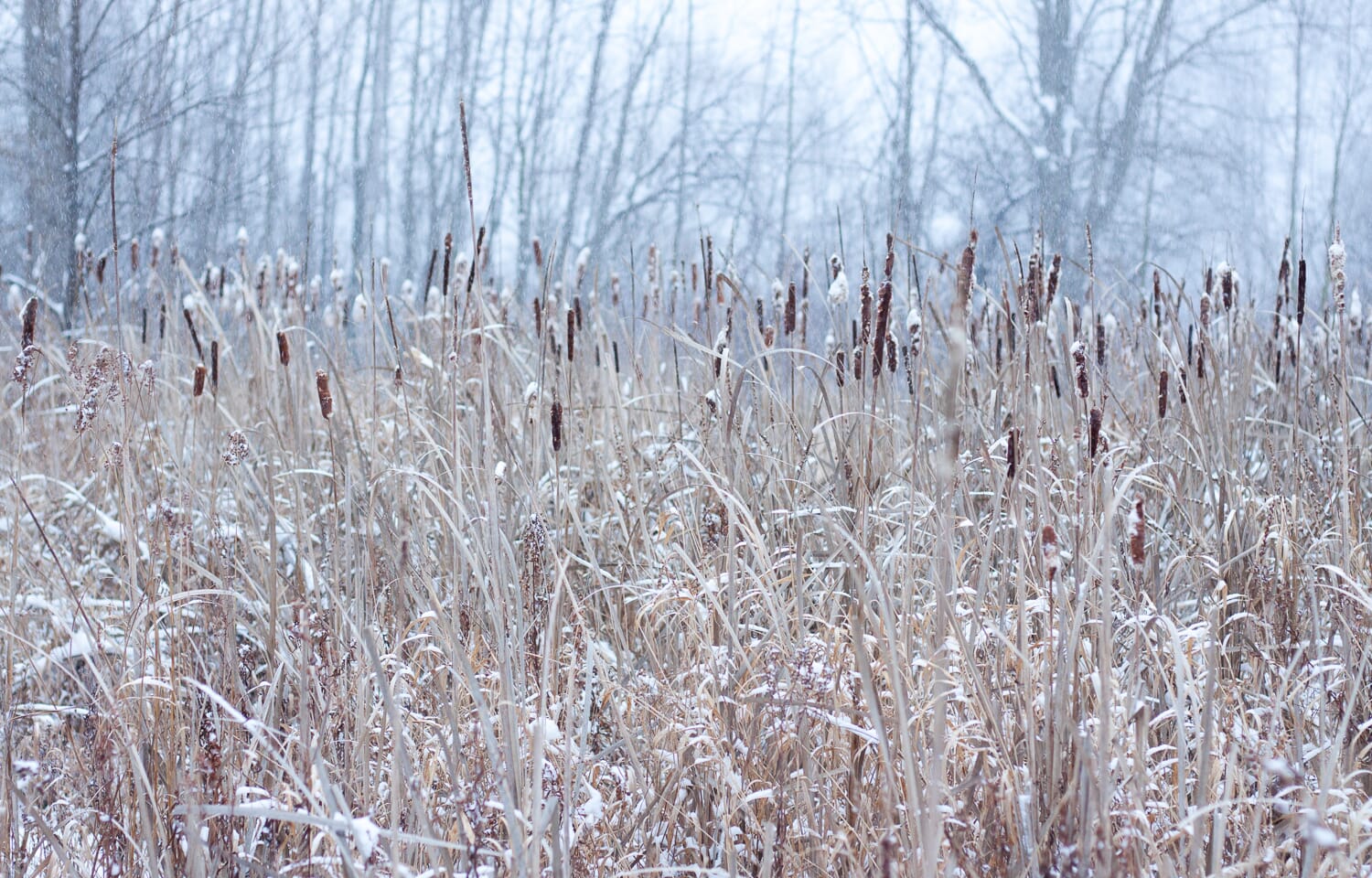
Cool, right?
Telephoto landscape photography is also a great way to deal with scenic areas that you can’t get quite as close as you’d like–because the area is across a gorge, or because you’re on a boat, etc. Instead of getting a halfhearted wide-angle shot, why not pull out your telephoto lens?
You never know what you might end up with!
Note that, for landscape photography, I recommend a 70-200mm f/4 telephoto lens. This focal length is perfect for creating all sorts of cool compositions, and anything over 200mm tends to be overkill, anyways.
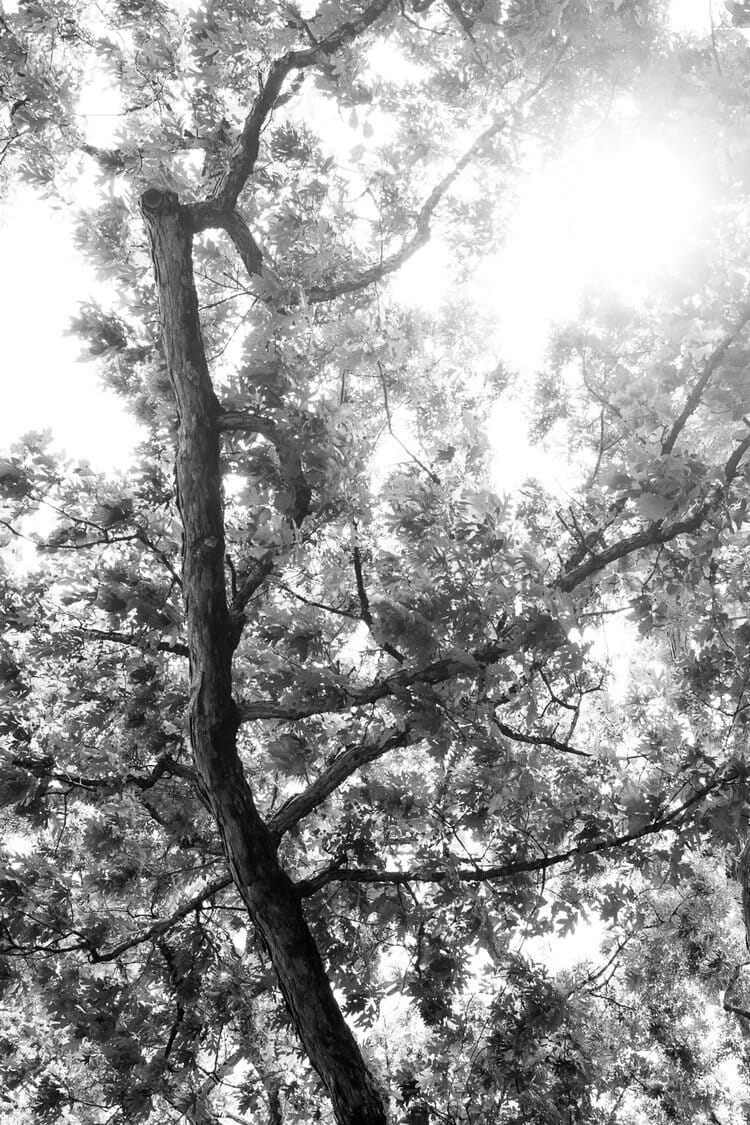
When to Use Telephoto Lenses: A Conclusion
Now that you’ve finished this article, you know all about telephoto lenses.
And you know how you can use a telephoto lens to capture amazing photos.

Because telephoto lenses have so many functions. With a telephoto lens, you can capture sports photos, wildlife photos, landscape photos, street photos, and much, much more.
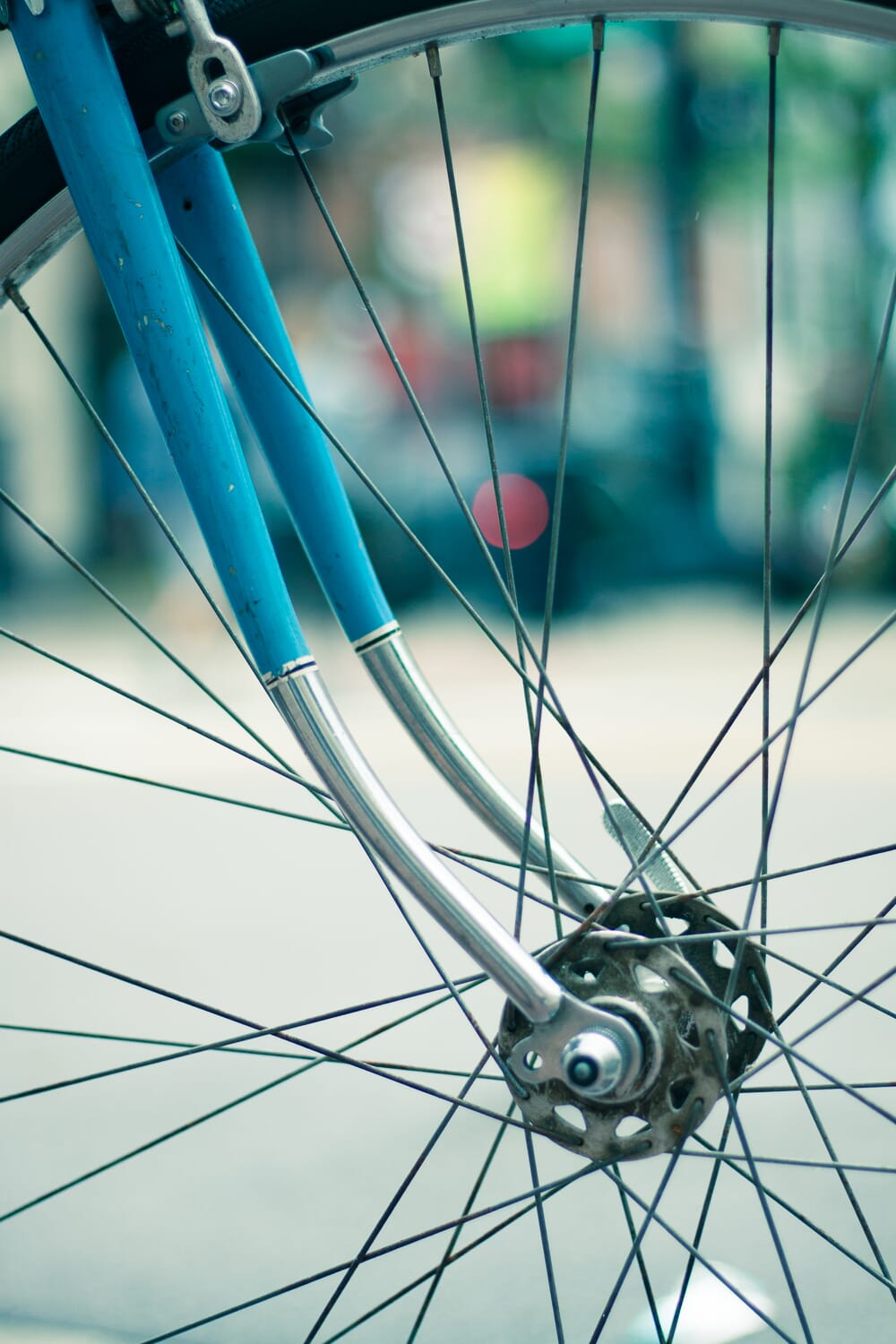
You just have to give it a chance!
When should I use a telephoto lens in my photography?
You can use a telephoto lens in your photography for all sorts of different purposes. For instance, you can use a telephoto lens for wildlife, bird, and sports photography–in order to get optically close to your subjects, because you certainly won’t be able to get physically close in a lot of cases. You can also use a telephoto lens for more unconventional purposes, such as capturing landscape images, or for shooting detail shots of natural features (trees, tree leaves, flowers), or even for capturing details of urban landscapes. You can use a telephoto lens for beautiful backgrounds, as the longer focal length will help create a lovely background blur. Finally, you can use a telephoto lens for a nice compression effect, where the foreground is turned into a stunning wash of color.
Can you use telephoto lenses to capture beautiful landscapes?
Absolutely! There are many stunning landscape opportunities that you can find with a telephoto lens; you just have to broaden your mind in order to find them. In fact, telephoto landscape photography is unconventional but frequently stunning, because it offers a unique look at landscape features that you wouldn’t have noticed otherwise. I recommend using a 70-200mm lens for this kind of telephoto work, because it’ll give you a nice focal length range for compressing natural landscape features.
Can you use telephoto lenses in street photography?
You can use telephoto lenses in street photography, but you should be careful. The longer your lens, the more people will notice you, and the more uncomfortable they may feel. You want to be seen as a harmless photographer, not some paparazzo. I’ve used a 70-200mm lens for street photography, and I found it to be deeply uncomfortable–it just felt so voyeuristic. If you do use a telephoto lens for street photography, I recommend shooting architecture and scenics rather than images of people; that way, you can avoid discomfort all around.
Do bird and wildlife photographers use telephoto lenses all the time?
Wildlife and bird photographers use telephoto lenses very frequently, but not exclusively. There are some wildlife photographers who like to work with wide-angle lenses–in order to add a lot of depth to a scene or to give it a very unique look. But aside from situations like these, telephoto lenses (really, super telephoto lenses) are a necessity in wildlife and bird photography, because animals don’t come near people on purpose! Instead, you have to use a long lens to get close.
What are the best telephoto lenses on the market in 2020?
The particular telephoto lens you buy depends on your camera system, but I recommend going for a lens in the 70-200mm range, especially if you want to do telephoto detail shots or telephoto landscape shots. A 70-200mm lens is big without becoming too big, and they tend to be very impressive optically. Note that you can grab a 70-200mm f/4 for much cheaper than a 70-200mm f/2.8 counterpart, and I generally recommend this–unless you need a very fast lens for low-light handholding (i.e., for event photography or sports photography). If you’re planning to shoot wildlife or birds, however, you’ll need something longer than 70-200mm. A 400mm super telephoto lens is the bare minimum you can get away with, and even that will be short on a full-frame camera. So I recommend you choose a wildlife lens very, very carefully, going for as much reach as you can manage.
Thanks for the great, informative article
very informative